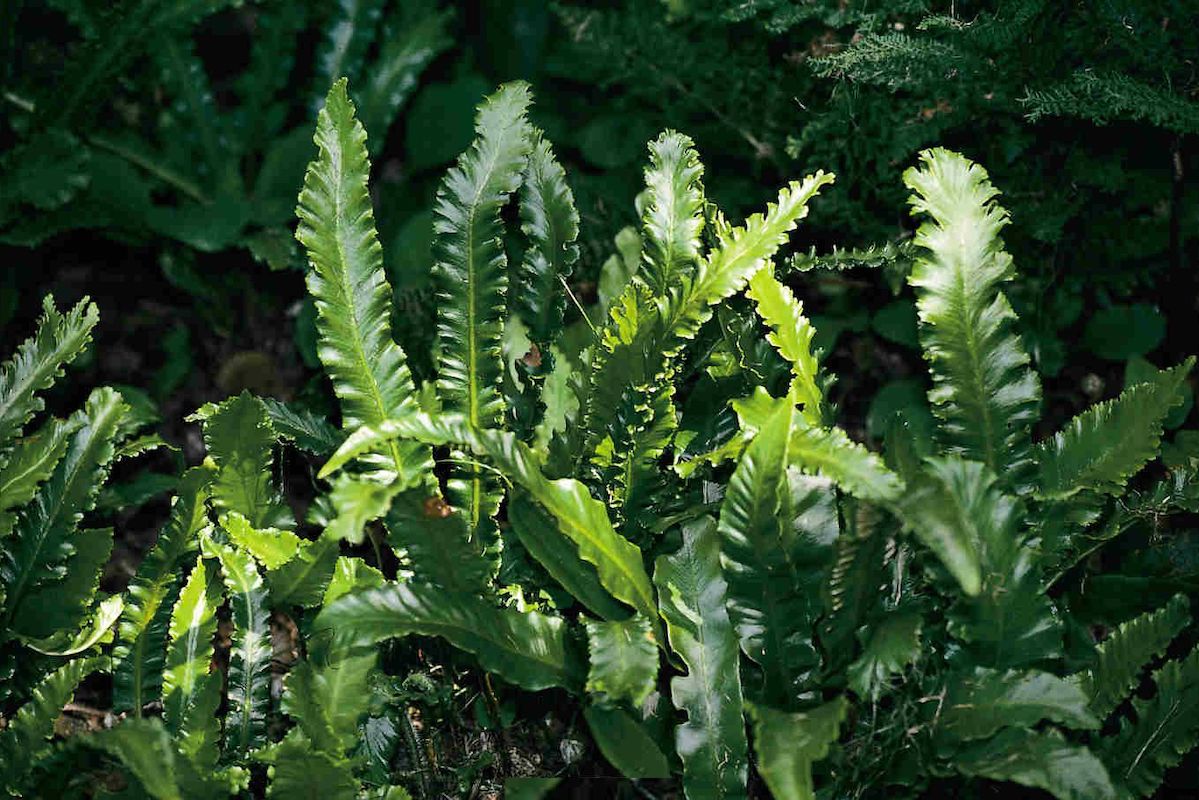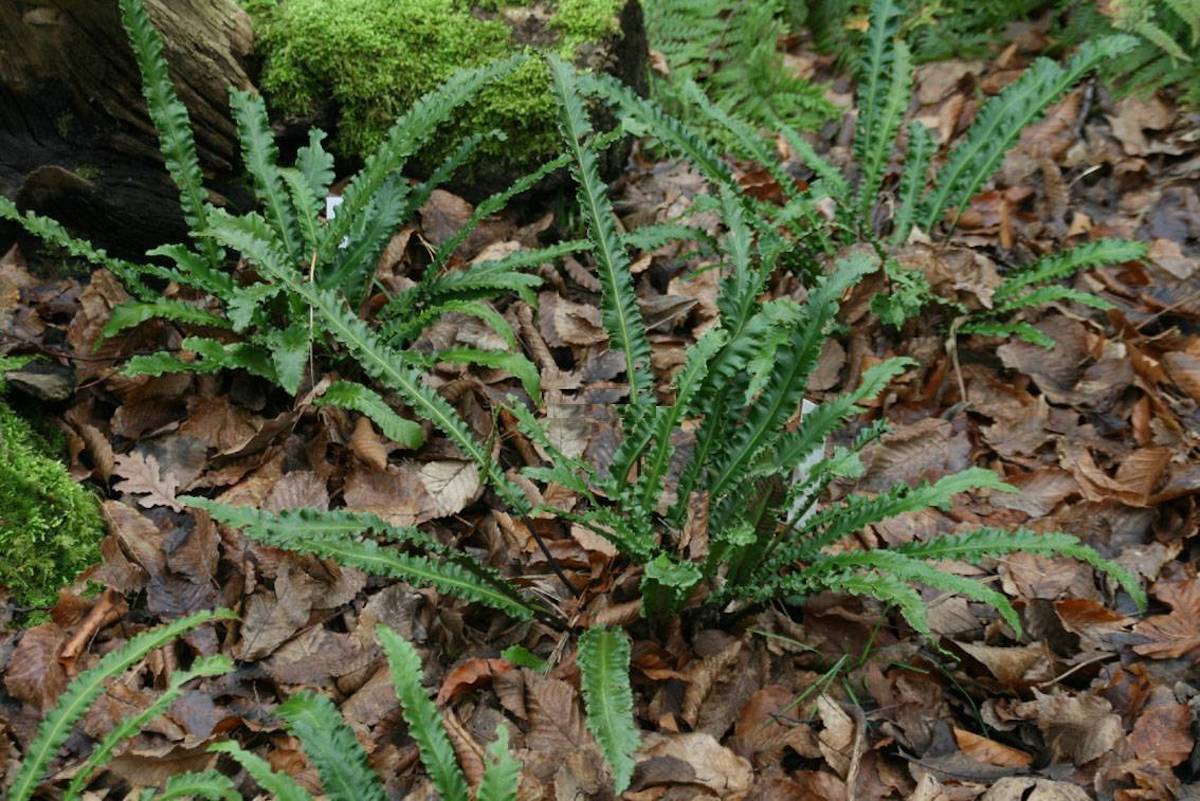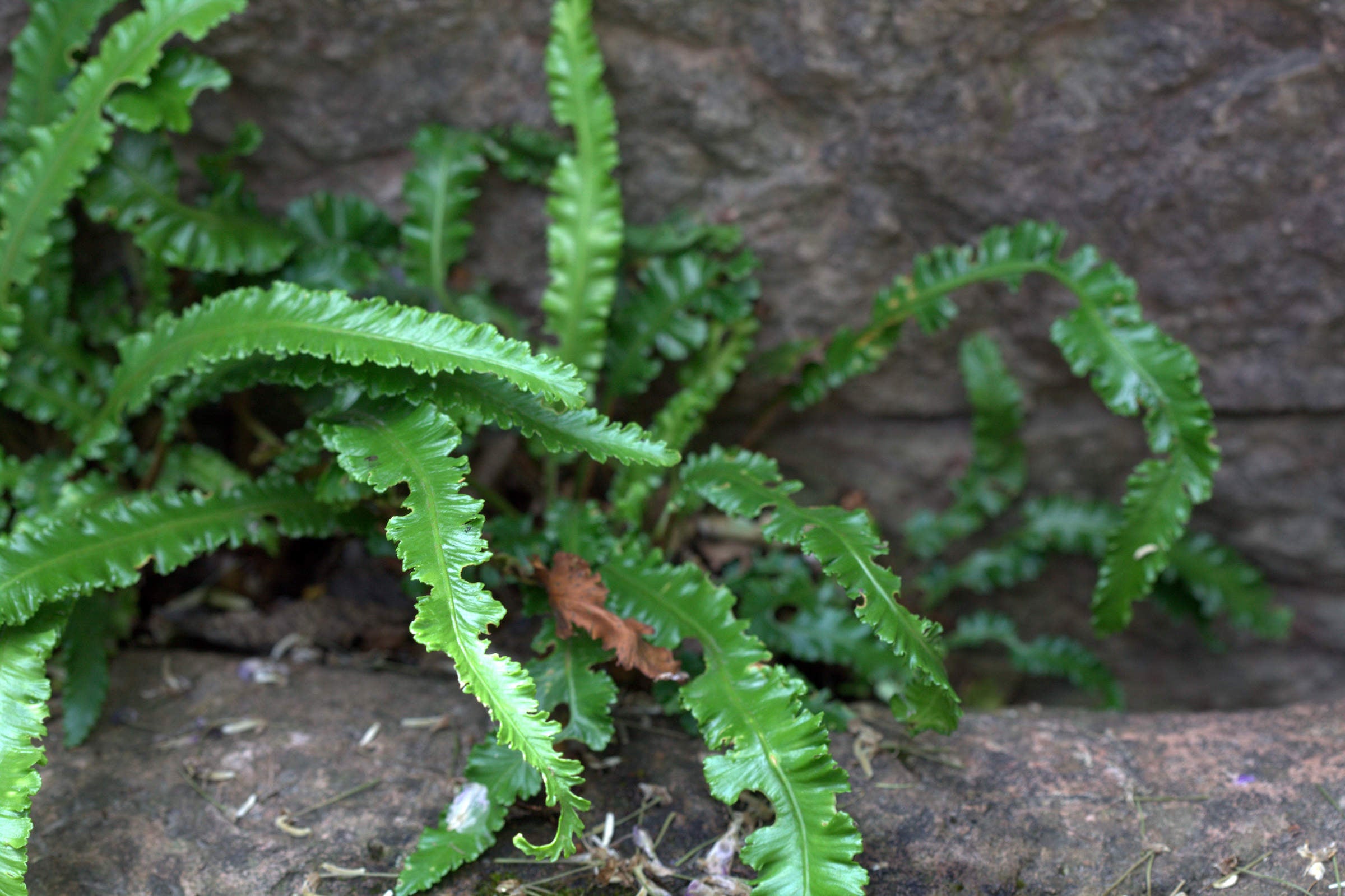Asplenium scolopendrium 'Angustatum'
Approx. 0.5 litre pot
About this cultivar:
Asplenium scolopendrium 'Angustatum' is a narrower leaved, more upright, more compact, frilly form of the species with an RHS award of Garden Merit . What about the species? Let me copy and paste below!
Asplenium scolopendrium is, from the RHS “an evergreen fern forming a rosette of arching, rich green, strap-shaped fronds, the margins often undulate. Spores borne in conspicuous transverse stripes beneath the fronds”. Blimey. In other words, it is a glossy fleshy fern with wonderful white stripes visible beneath the leaves. The stripes led to the species name 'scolopendrium' (the Latin for centipede!). In dark woodlands I think these stripes glow! The common name is Hart's Tongue Fern. Meaning Deer in old English. Deer’s tongue – I have included the relevant photo for comparison.
A great fern for anywhere, will grow in some dry areas and even in walls, crevices etc.
- Position: Full shade, partial shade
- Soil: Almost any soil, grows well in Ballyrobert
- Flowers: -
- Other features: Grows well in Ballyrobert, Woodland Plant, Dappled Shade or Full Shade Loving, Interesting Foliage or Fruit, Royal Horticultural Society Award of Garden Merit (RHS AGM)
- Hardiness: H6 - Hardy in all of UK and northern Europe (-20 to -15°C), Fully hardy - grows well in Ballyrobert!
- Habit: Tufted, Clump forming
- Foliage: Evergreen
- Height: 30 - 45 cm (1 - 1.5 ft)
- Spread: 30 - 45 cm (1 - 1.5 ft)
- Time to full growth: 2 to 5 years
- Plant type: Herbaceous Perennial, fern
- Colour: Green
- Goes well with: Shade
About this genus:
Asplenium is a genus of about 700 species of ferns, often treated as the only genus in the Spleenwort family (Aspleniaceae) but I’m sure DNA results will change all that soon.
The most common vernacular name is spleenworts, applied to the more "typical" species. Asplenium nidus and several similar species are called bird's-nest ferns, the Camptosorus group is known as walking ferns, and distinct names are applied to some other particularly well-known species.
Many groups of species have been separated from Asplenium as segregate genera but these species can form hybrids with other Asplenium species and because of this are usually included in a more broadly defined Asplenium.
Both the scientific name and the common name "spleenwort" are derived from an old belief, based on the doctrine of signatures, that the fern was useful for ailments of the spleen, due to the spleen-shaped sori on the backs of the fronds. "-wort" is an ancient English term that simply means "plant" (like in German ‘wurz’). The genus name is Latin asplenum for spleenwort, from Greek asplēnon, irregular from splēn meaning….spleen.
As you’d expect with over 700 species it is hard to generalise but some of them are great ornamental plants. Ummm, like most ferns, good in full shade to part shade. Not to dry please. I love ferns so I think just grow them where you can – verdant!








